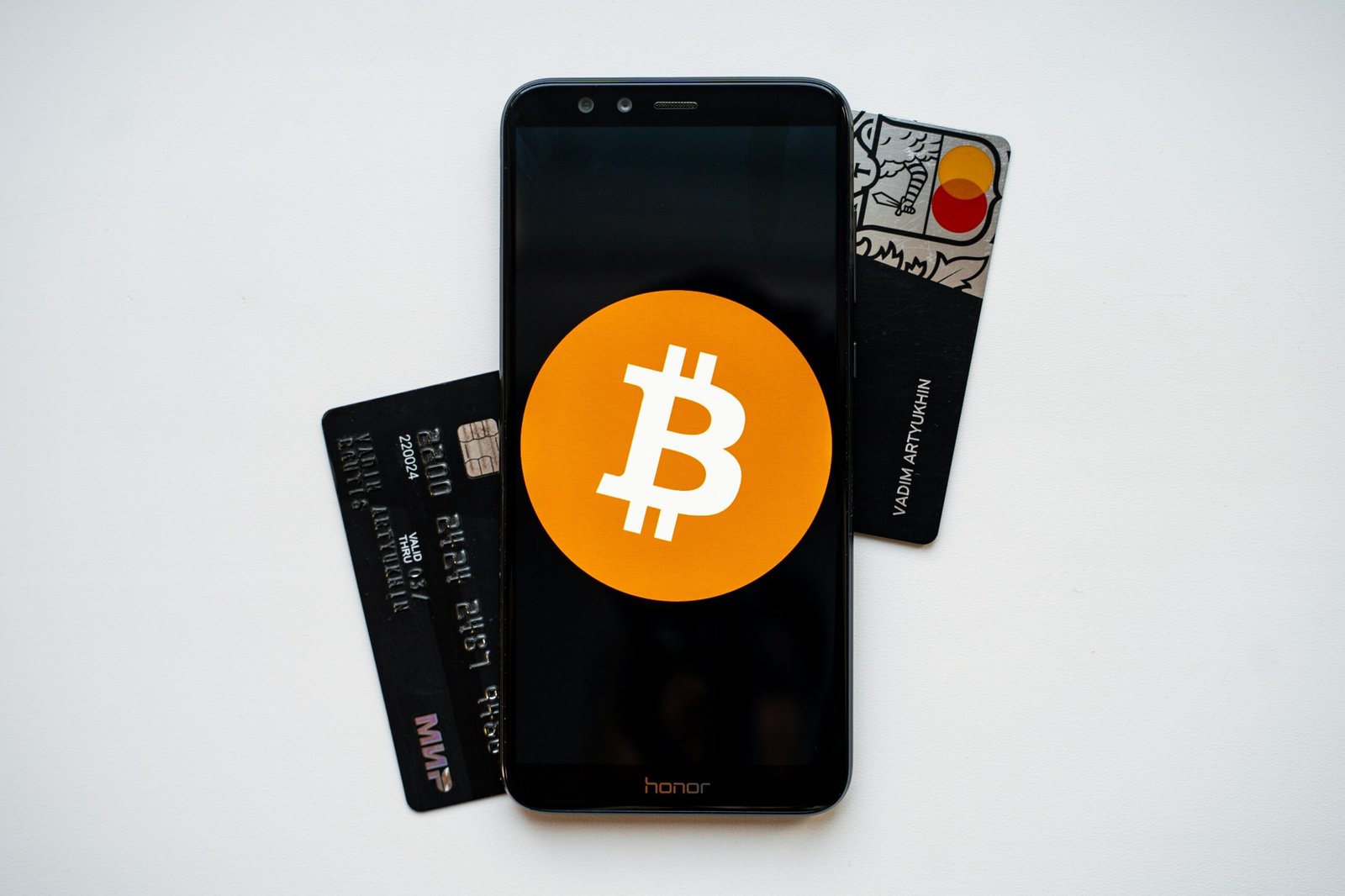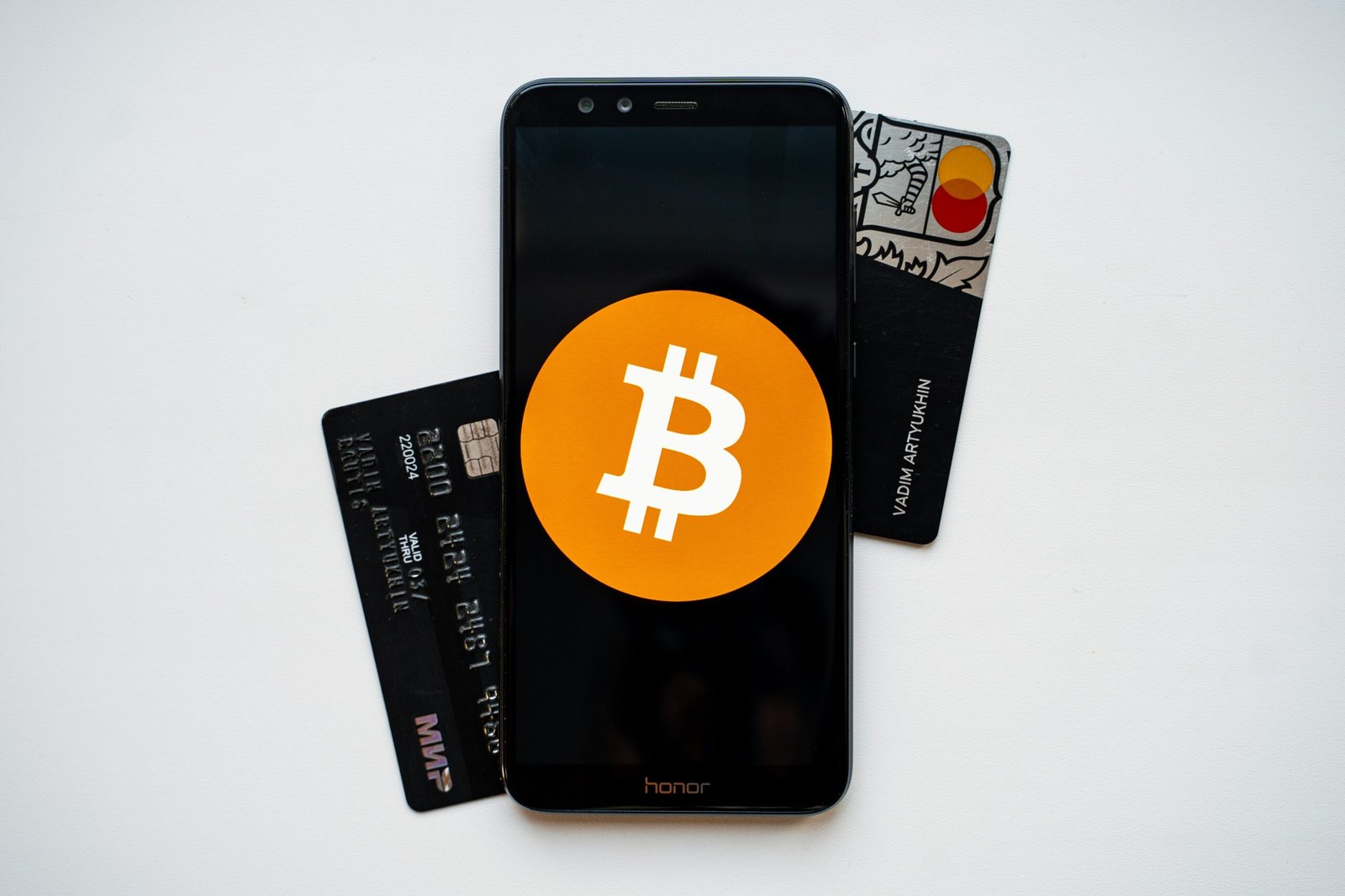Introduction to Crypto Wallets
In the rapidly evolving world of cryptocurrency, the concept of crypto wallets stands as a cornerstone for securely managing digital assets. A crypto wallet, essentially, is a digital tool that allows users to store, manage, and transact their cryptocurrencies. Unlike traditional wallets that hold physical currency, a crypto wallet holds the private keys necessary to access and manage one’s digital currency holdings on the blockchain. These private keys are cryptographic sequences that provide ownership and control over the associated cryptocurrency units.
The importance of crypto wallets cannot be understated, given the decentralized and irreversible nature of blockchain transactions. Without a secure crypto wallet, users risk losing access to their funds or falling victim to cyber-attacks and fraud. The primary function of a crypto wallet is to ensure the safe storage of private keys, thereby safeguarding the user’s digital assets from unauthorized access.
Crypto wallets come in various forms, each offering different levels of security and convenience. Broadly, they can be categorized into two types: hot wallets and cold wallets. Hot wallets are connected to the internet and provide greater ease of access and usability, making them ideal for frequent transactions. Examples include mobile wallets, desktop wallets, and web wallets. Cold wallets, on the other hand, are offline storage solutions that offer enhanced security by keeping private keys away from internet exposure. This category includes hardware wallets and paper wallets, which are preferred for storing larger amounts of cryptocurrency over long periods.
Understanding the different types of crypto wallets and their functionalities is crucial for any cryptocurrency user. Whether one opts for the convenience of a hot wallet or the security of a cold wallet, the ultimate goal remains the same: to protect digital assets in an environment where security threats are ever-present. As the cryptocurrency landscape continues to expand, the role of crypto wallets in safeguarding digital wealth will only become more pivotal.
Types of Crypto Wallets
When it comes to safeguarding your digital assets, understanding the different types of crypto wallets is crucial. Each type of wallet offers unique features, benefits, and potential drawbacks, making them suitable for different needs and preferences. Here, we will explore hardware wallets, software wallets, mobile wallets, desktop wallets, and paper wallets.
Hardware Wallets are physical devices designed to store your private keys offline. They are considered one of the most secure options since they are immune to online hacks and malware. Popular hardware wallets include Ledger and Trezor. The primary benefit is their enhanced security; however, they can be costly and less convenient for frequent transactions.
Software Wallets, also known as hot wallets, are applications that can be installed on your computer or mobile device. They offer convenience and are usually free to use. However, being connected to the internet makes them more vulnerable to cyber attacks. Examples include Exodus and Electrum.
Mobile Wallets are a subset of software wallets designed for use on smartphones. They provide the advantage of on-the-go access to your crypto assets and are user-friendly. Trust Wallet and Mycelium are popular choices. The downside is that they share the same security risks as other software wallets and are susceptible to malware and phishing attacks.
Desktop Wallets are installed on a personal computer and offer a balance between security and usability. They provide a higher level of security compared to mobile wallets, as long as the computer is free from malware. Examples include Bitcoin Core and Atomic Wallet. However, the need to maintain a secure environment on the desktop can be a challenge.
Paper Wallets are an offline option where your private keys are printed on a piece of paper. This method eliminates the risk of online hacks but introduces the risk of physical damage or loss. A paper wallet can be an excellent choice for long-term storage but is impractical for regular transactions.
Understanding the features, benefits, and drawbacks of each type of crypto wallet will help you make an informed decision on the best option for securing your digital assets.
How Crypto Wallets Work
Crypto wallets are pivotal tools for securing and managing digital assets. At their core, these wallets operate using a combination of public and private keys. The public key functions akin to an account number; it can be shared freely and is used to receive funds. Conversely, the private key is a closely guarded secret, essential for accessing and controlling the digital assets stored within the wallet.
The interplay between public and private keys is fundamental to the security of crypto transactions. When a transaction is initiated, it is digitally signed using the sender’s private key. This signature serves as proof that the transaction was authorized by the wallet owner and ensures that the transaction cannot be altered once it has been signed. The signed transaction is then broadcasted to the blockchain network, where it is validated by nodes through a process called consensus.
Blockchain technology underpins the security and integrity of digital assets. Each transaction is recorded in a block, which is then linked to the preceding block, forming a chain. This immutable ledger ensures that every transaction is transparent and tamper-proof. The distributed nature of blockchain means that multiple copies of the ledger exist across a vast network of nodes, making it exceedingly difficult for any single entity to alter the transaction history.
Crypto wallets come in various forms, including hardware wallets, software wallets, and paper wallets. Hardware wallets are physical devices that store private keys offline, providing an extra layer of security against online threats. Software wallets, on the other hand, are applications or programs that can be installed on a computer or smartphone, offering convenience and accessibility. Paper wallets involve printing out the private and public keys on a piece of paper, which can be stored securely offline.
Understanding how crypto wallets work is crucial for anyone looking to delve into the realm of digital assets. By grasping the technical aspects of public and private keys, transaction signing, and blockchain technology, users can better appreciate the robust security mechanisms that safeguard their digital wealth.
Setting Up Your Crypto Wallet
Setting up a crypto wallet is a critical step in safeguarding your digital assets. The process varies depending on the type of wallet you choose, whether it be hardware, software, mobile, or web-based. Each type has its own set of instructions and security measures.
Choosing a Reputable Wallet Provider
Before diving into the setup process, it’s essential to choose a reputable wallet provider. Research thoroughly to ensure the provider has a strong track record of security and user satisfaction. Look for wallets that offer features such as two-factor authentication, encryption, and regular updates. Reviews and testimonials can be valuable resources in making an informed decision.
Creating Your Wallet
Once you’ve selected a provider, follow these general steps to create your wallet:
1. Download and Install: For software and mobile wallets, download the wallet app from the official website or app store. Ensure you’re using the correct and secure source to avoid malware.
2. Create an Account: Open the app and create a new account. You will be prompted to set a strong password. A complex password combining letters, numbers, and special characters will enhance security.
3. Generate Private Keys: The wallet will generate a private key or seed phrase. This key is crucial for accessing your funds. Write it down on paper and store it in a secure location. Do not save it digitally to avoid hacking risks.
Securing Your Wallet
Securing your crypto wallet involves several steps:
1. Enable Two-Factor Authentication: Most reputable wallets offer two-factor authentication (2FA). Activate this feature to add an extra layer of security.
2. Regular Updates: Keep your wallet software up to date. Regular updates often include security patches that protect against the latest threats.
3. Backup Your Wallet: Regularly back up your wallet. If your device is lost or damaged, you can restore your funds using the backup. Store backups in multiple locations to ensure redundancy.
Conclusion
Setting up a crypto wallet correctly is foundational to protecting your digital assets. By following these steps and choosing a reputable provider, you can ensure your wallet is both secure and functional. Always prioritize the safety of your private keys and stay vigilant against potential threats.
Best Practices for Securing Your Wallet
Securing your crypto wallet is of paramount importance to safeguard your digital assets effectively. One of the foundational steps in ensuring wallet security is the creation of strong, unique passwords. A robust password typically includes a mix of upper and lower case letters, numbers, and special characters, making it difficult for unauthorized parties to gain access.
Enabling two-factor authentication (2FA) adds a crucial layer of security. 2FA requires not only a password but also a second form of verification, such as a code sent to your mobile device. This dual requirement significantly mitigates the risk of unauthorized access, even if your password is compromised.
Regularly updating your wallet software is another vital practice. Software updates often contain patches for security vulnerabilities that have been identified. By keeping your software current, you ensure that you have the latest protections against potential threats.
Phishing scams remain one of the most prevalent threats to crypto wallet security. These scams often involve fraudulent emails or websites designed to trick you into revealing your login credentials. To avoid falling victim to phishing attacks, always verify the authenticity of websites and emails before entering personal information, and be cautious of unsolicited communications.
For enhanced security, consider using a hardware wallet. Hardware wallets store your private keys offline, making them immune to online hacking attempts. They offer a secure way to manage your crypto assets, providing peace of mind that your digital assets are protected from online threats.
By adhering to these best practices—utilizing strong passwords, enabling two-factor authentication, keeping software updated, staying vigilant against phishing scams, and using hardware wallets— you can significantly bolster the security of your crypto wallet. These measures collectively contribute to a robust defense, ensuring that your digital assets remain safe from potential threats.
Common Threats and How to Avoid Them
Cryptocurrency wallets, while offering a secure means of managing digital assets, are not impervious to threats. Awareness of these vulnerabilities and proactive measures to mitigate them are crucial in safeguarding one’s digital wealth. Among the prominent threats are hacking, malware, and social engineering attacks.
Hacking remains a predominant threat to crypto wallets. Cybercriminals often exploit vulnerabilities in software or leverage brute force attacks to gain unauthorized access. To counteract this, it is imperative to use wallets with robust security features, such as multi-factor authentication (MFA) and encryption. Regularly updating wallet software ensures that any security patches are applied, reducing the risk of exploitation.
Malware specifically targeting cryptocurrency wallets can silently siphon funds or steal private keys. This malicious software can infiltrate devices through phishing emails, malicious downloads, or compromised websites. Utilizing reputable antivirus programs and regularly scanning devices can significantly reduce the risk of malware infections. Additionally, downloading wallet applications and updates only from trusted, official sources is essential to avoid counterfeit software.
Social engineering attacks, including phishing and impersonation, trick individuals into divulging sensitive information. Attackers may pose as legitimate entities, such as wallet providers or support personnel, to gain trust. To avoid falling victim to such tactics, be cautious of unsolicited communications and verify the authenticity of the sender. Never share private keys or passwords via email or messaging platforms.
Incorporating these preventative measures into your routine can greatly enhance the security of your crypto wallet. Employing a combination of strong security practices, such as regular software updates, trusted antivirus protection, and vigilance against social engineering, is essential for protecting digital assets from prevalent threats.
Recovering a Lost or Compromised Wallet
Losing access to your crypto wallet or suspecting it has been compromised can be a daunting experience. However, understanding the necessary steps to recover your wallet can mitigate potential losses. One of the most critical aspects of wallet recovery is the backup phrase. This sequence of words, also known as a seed phrase, is essentially the master key to your digital assets. Make sure to store this phrase securely, preferably offline, in multiple locations.
If you lose access to your wallet, the first step is to locate your backup phrase. Most wallets will allow you to restore access by entering this phrase. Follow the instructions provided by your wallet provider to recover your funds. In cases where the backup phrase is lost, recovery becomes significantly more challenging, highlighting the importance of safeguarding this information.
In the event of a suspected hack, act swiftly to limit the damage. Immediately transfer remaining funds to a new, secure wallet. This action can prevent further unauthorized access. Additionally, scrutinize recent transactions for any irregularities and report the incident to your wallet provider. They may offer additional guidance or tools to enhance the security of your assets.
Implementing a recovery plan is crucial for any crypto wallet user. Regularly update your security measures, including changing passwords and enabling two-factor authentication. Stay informed about the latest security practices and consider using hardware wallets, which offer enhanced protection compared to software-based options.
In conclusion, recovering a lost or compromised crypto wallet requires prompt and informed action. By prioritizing the secure storage of your backup phrase and having a robust recovery plan, you can safeguard your digital assets effectively. Remember, the key to successful recovery lies in preparation and vigilance.
Future Trends in Crypto Wallet Security
As the landscape of digital assets continues to evolve, so too does the technology designed to protect them. One of the most promising advancements in crypto wallet security is the integration of multi-signature wallets. Multi-signature (or multi-sig) wallets require multiple keys to authorize a transaction, significantly enhancing security by reducing the risk of unauthorized access. This method ensures that even if one key is compromised, the assets remain secure, as additional keys are needed to complete any transaction.
Another notable trend is the adoption of biometric authentication methods. Traditional passwords and PINs are increasingly being supplemented, or even replaced, by biometric data such as fingerprints, facial recognition, and iris scans. These biometric measures offer an additional layer of security, leveraging unique human characteristics that are difficult to replicate or steal. The integration of biometric authentication into crypto wallets is expected to become more widespread, providing users with a more secure and seamless experience.
Decentralized wallet solutions are also gaining traction within the cryptocurrency community. Unlike centralized wallets, which store private keys on a central server, decentralized wallets distribute keys across multiple nodes. This dispersion minimizes the risk of a single point of failure and enhances the overall security of the digital assets. Decentralized wallets align with the core principles of blockchain technology, emphasizing security, transparency, and user control.
Looking ahead, these emerging trends indicate a future where crypto wallets will become increasingly sophisticated and secure. The combination of multi-signature technology, biometric authentication, and decentralized systems is poised to offer robust protection against threats. As the industry progresses, continuous innovation and adaptation will be crucial in safeguarding digital assets, ensuring that users can trust in the security of their crypto wallets.


